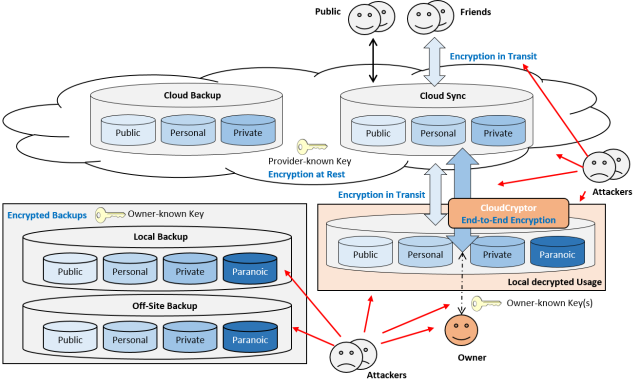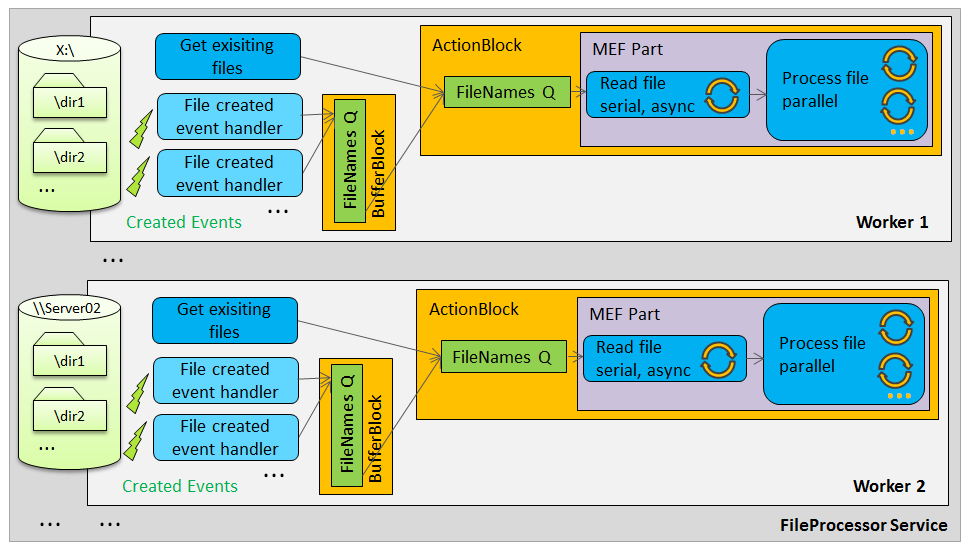[ Dies ist ein Auszug aus meinem Artikel “Wolkentresor” im dotnetpro Magazin 9.2015 mit einigen ergänzenden Abbildungen ]
Private files should only be stored in the cloud being encrypted via a key controlled and known by the user solely (= end-to-end encryption). Transport encryption and encryption in the cloud provided by storage providers are not sufficient here.
The safety of encryption depends on good passwords. Passwords are good if they are not only strong but also easy to use. For an interesting discussion about better passwords see Toward Better Master Passwords.
Some cloud storage providers like Tresorit support automatic end-to-end encryption out of the box. For an overview and reviews of cloud storage providers and VPN services see Cloudwards. Many widely used services like DropBox and the deeply in Windows integrated OneDrive are sadly lacking this support. For these one can use additional encryption tools like:
boxcryptor: Good commercial tool.
CryptSync: Free open source tool based on 7-zip encryption.
Allows decrypting files even without CrypSync using 7-zip apps.





